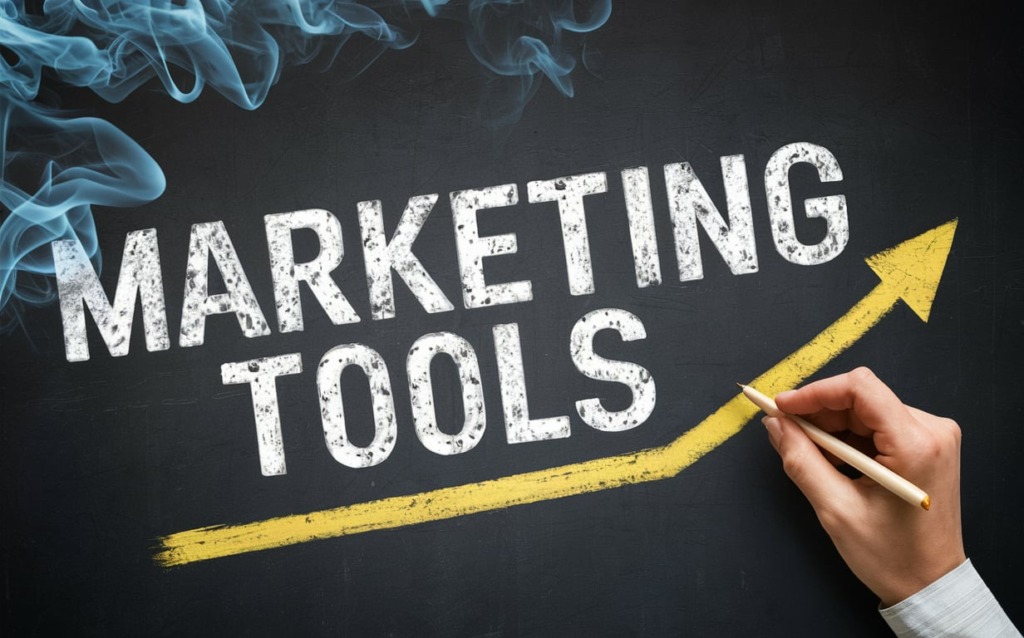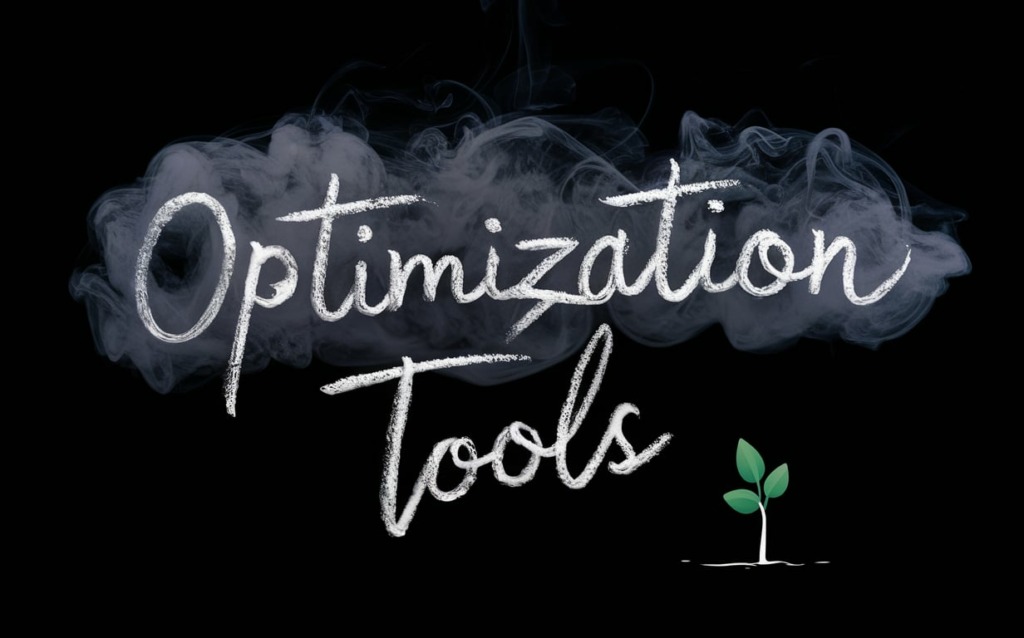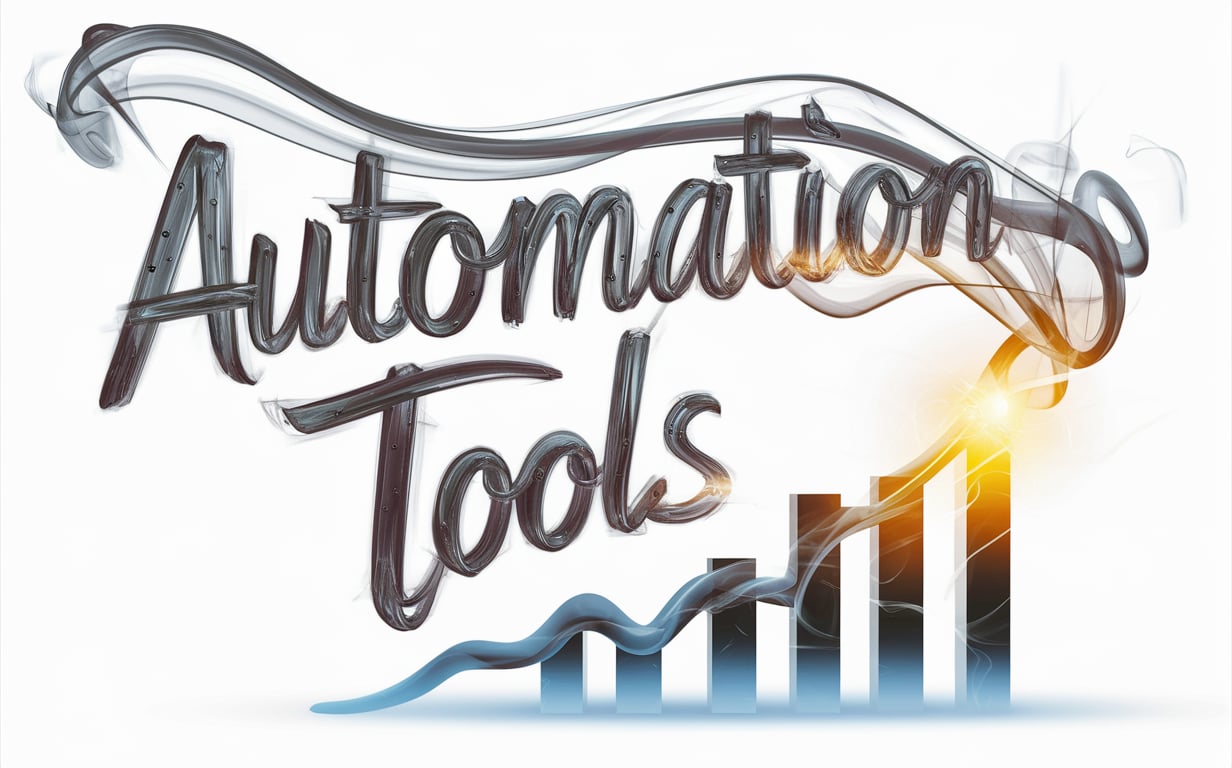Growth hacking is igniting startups and brands worldwide. But you can’t hack growth without the right tools and mindset to fuel sustainable traction. This definitive guide equips you with the ultimate arsenal of growth technologies to unlock rapid experimentation, turbocharge results, and delight customers.
Discover the must-have growth hacking tools spanning every marketing discipline – from social media to SEO, automation to analytics, and beyond. We’ve done the digging to cherry pick the highest-impact platforms for dominating each lever of the growth machine. Equip yourself with the insights, stack examples, and strategic approaches you need to engineer viral expansion.
Let’s get hacking!
Introduction to Growth Hacking Tools
Growth hacking is all about experimentation and creativity to rapidly grow a business. Instead of relying solely on traditional marketing tactics, growth hackers use innovative strategies and data-driven tools to get the maximum results from minimal resources.
In simple terms, growth hacking tools are software, apps, and platforms that help you execute and optimize your growth efforts. These tools empower you to understand your customers, create compelling messaging, automate processes, and analyze performance.
With the right growth tools, you can take your marketing to the next level. But why exactly are these tools so invaluable for growth hacking?
The Importance of Growth Tools
- Gain insights – Tools like Google Analytics provide data on your traffic sources, conversions, and more. This intelligence informs better decision making.
- Automate tasks – You can use tools like Zapier to streamline repetitive jobs like data transfer between platforms. This leaves you free to focus on high-impact work.
- Improve efficiency – Growth tools help you do more in less time. For example, content scheduling tools let you plan social media posts in advance.
- Enhance creativity – Tools spark new ideas and enable quick testing of concepts. Design tools like Canva facilitate rapid creation of graphics and visuals.
- Enable experimentation – A/B testing tools like Optimizely allow you to trial multiple versions of pages, offers, and other elements to see what resonates best with your audience.
- Reduce costs – The best growth tools provide maximum value at affordable prices. You get enterprise-level capabilities on a startup budget.
- Drive conversions – Tools focused on conversion rate optimization, like landing page builders, help you turn more visitors into customers.
- Track performance – With detailed analytics from tools like Google Analytics, you can connect growth activities to tangible business results.
Categories of Growth Tools
Growth hacking tools span a wide range of functions. Here are some of the main categories:
- Media monitoring – Track brand mentions across social media, news, blogs, forums, and more. Tools like Brand24 and Google Alerts.
- Content marketing – Create, publish, and promote content across channels. Includes content calendars, graphics tools, and social media managers like CoSchedule.
- Email marketing – Build and manage email campaigns and newsletters to nurture leads. Examples are Mailchimp, ConvertKit, and Drip.
- Lead generation – Collect and manage leads through landing pages, forms, chatbots. Tools like Unbounce, ManyChat, and Leadfeeder.
- Conversion rate optimization (CRO) – Optimize landing pages and improve conversion rates. Hotjar, Google Optimize, and Optimizely.
- SEO – Improve search engine rankings with keyword research, site audits, and link building tools. Ahrefs, Moz, SEMrush.
- Marketing analytics – Track and analyze performance across channels like Google Analytics and Mixpanel.
- Marketing automation – Scale marketing through pre-programmed workflows and campaigns. ActiveCampaign, HubSpot.
- Advertising – Create, manage, and optimize paid advertising campaigns on platforms like Facebook and Google.
This list just scratches the surface of the many categories of amazing growth tools available today. The key is choosing the right mix of solutions that fit your business goals and complement each other for maximum results.
As you explore the various options, focus on identifying where you need the most help to overcome challenges and obstacles in your customer acquisition and growth journey. Select tools that fill critical gaps and provide the greatest ROI for your needs and budget.
With the robust growth hacking toolset outlined in this guide, you’ll be armed with everything you need to hypercharge your business growth! Let’s get started exploring the top tools in each category.

Media Monitoring and Market Research Tools
Listening closely to conversations happening online is crucial for understanding your market landscape and customers. Media monitoring and market research tools empower you to keep your finger on the pulse of what people are saying about your brand, competitors, industry, and topics of interest.
These tools allow you to extract insights from mountains of unstructured data across the social web and Surface trends, opportunities, influencers, threats, and more.
Social Media and Web Monitoring Tools
Monitoring tools scan blogs, forums, news sites, review platforms, social networks, and more to provide a single stream of mentions. Here are some top options:
Brand24
Brand24 is an AI-powered social listening platform that aggregates brand mentions from over 2 billion online sources.
Key features:
- Customizable alerts and keywords
- Sentiment analysis
- Influencer and KOL discovery
- Competitor benchmarking
- Historical data up to 3 years
Google Alerts
Google Alerts emails you whenever keywords are mentioned online. It searches news, web, blogs, videos, discussions, books, and more.
Key features:
- Alerts for new results or only best results
- Search title only or entire article
- Frequency customization from real-time to weekly
- Email and RSS delivery
- Free to use
Mention
Mention is a media monitoring tool focused on social media listening. It tracks brand mentions across social platforms like Twitter, Facebook, Instagram, YouTube, blogs, forums, and more.
Key features:
- Real-time alerts
- Customizable search keywords
- Sentiment analysis
- Influencers identification
- Auto-generated social media reports
Hashtag and Influencer Tracking Tools
Specialized tools allow deeper analysis of influencers talking about your brand and tracking hashtag performance.
Keyhole
Keyhole tracks hashtags across social networks to provide analytics on engagement and reach. You can benchmark performance and find influencers and followers for your target hashtags.
Key features:
- Real-time and historical hashtag data
- Insights on top posters, amplifiers, recently used hashtags
- Hashtag suggestions based on your brand or industry
- Downloadable analytics reports
Hashtagify
Hashtagify helps discover the best hashtags to reach your target audience on platforms like Instagram and Twitter. It provides insights like monthly searches, engagement, related hashtags, and influencer usage for any hashtag.
Key features:
- Monthly search volumes for hashtags
- Related and trending alternative hashtags
- Influencer usage and UGC examples
- Competitor hashtag benchmarking
BuzzSumo
BuzzSumo analyzes influencer profiles and lets you discover the most shared content for your topic or competitors. You can uncover influencers and outreach opportunities.
Key features:
- Influencers sorted by authority and reach
- Analysis of top shared articles by influencers
- Outreach contact data like email and social handles
- Compare influencer impact and networks
Media monitoring and market research tools empower you to actively listen online for growth opportunities. Instead of passively waiting for customer feedback, you can proactively identify areas to improve based on public conversations andinteractions. Ultimately, these insights help you make better data-driven decisions to serve your audience and stand out from competitors.
Content Creation and Marketing Tools
Content remains king in growth marketing. Well-designed content helps you attract, engage, and convert more leads. Content creation and marketing tools enable you to efficiently produce compelling assets and distribute them across channels for maximum impact.
Content Scheduling and Social Media Management
Planning and scheduling social media content ensures your brands stays top of mind. Automation frees you up to focus on high-value tasks.
Buffer
Buffer is a social media management platform that lets you schedule posts, analyze performance, and manage multiple accounts from one dashboard.
Key features:
- Post queue for planning and scheduling
- Posting to Twitter, Instagram, LinkedIn, Facebook
- Analytics on engagement and best posting times
- Browser extensions for quick scheduling
- Affordable plans for individuals and teams
Hootsuite
Hootsuite helps manage all your social media channels including Twitter, Facebook, LinkedIn, and Instagram. It offers publishing, content curation, and monitoring features.
Key Features:
- Message scheduling across multiple networks
- Unified social inbox to manage conversations
- Team workflow functionalities
- Custom analytics dashboards
- Social media monitoring and reporting
CoSchedule
CoSchedule is a marketing calendar tool that makes it simple to plan, organize, and schedule all your content across teams.
Key features:
- Team content calendars with status views
- Traffic analytics to optimize planning
- Integration with blogs, social media, and email
- Marketing campaign management
- Automated post scheduling
Email Marketing and Outreach Tools
Email remains an indispensable channel for business growth. Specialized tools help you create effective cold outreach campaigns and compelling newsletters.
Mailshake
Mailshake manages and automates personalized cold email outreach campaigns. It streamlines follow-ups and tracks campaign performance.
Key features:
- Email templates and tracking
- Lead enrichment and email verification
- Workflow automation for follow-up
- AI-generated email subject line testings
- Detailed campaign performance analytics
Lemlist
Lemlist enables sending targeted and personalized cold emails at scale. It focuses on optimizing deliverability through email warmup and sanitizing.
Key features:
- Lead database management
- Email deliverability tools like warmup and sanitizing
- Email personalization with merge tags
- Automated scoring and lead enrichment
- Real-time campaign analytics
Outreach.io
Outreach specializes in account-based sales engagement and coordination across channels like email and social media. It helps streamline targeting, outreach, and reporting.
Key features:
- AI-optimization for outreach sequencing
- Account-based workflow automation
- Email templates and tracking
- Sales team performance analytics
- Integration with Salesforce and other CRMs
The distinction between marketing and sales continues to blur. Modern tools empower seamless transitions between content marketing to convert strangers into leads, and targeted outreach to nurture leads into delighted customers. The stack you build combining complementary solutions can accelerate growth dramatically.

Lead Generation and Conversion Optimization Tools
Driving traffic to your website is not enough. To maximize growth, you need tools that help you capture and convert high-intent visitors into customers. Lead generation and conversion rate optimization (CRO) tools enable you to grab attention and persuade visitors to take desired actions.
Landing Page Builders
Dedicated landing pages are ideal for converting visitors from ads or email campaigns. Page builder tools make it easy to create high-converting pages without coding.
Unbounce
Unbounce is an AI-powered landing page builder packed with hundreds of mobile-friendly templates, dynamic elements, and workflow automation.
Key features:
- A/B testing built-in
- Lead capture forms and scoring
- Real-time page analytics
- Integration with marketing automation
- High converting page templates
Leadpages
Leadpages offers pre-made templates and drag-and-drop editing to create landing pages, opt-in forms, sales pages, webinars, and alerts.
Key features:
- Library of mobile responsive templates
- Website pop-ups, slide-ins, banners
- Built-in email and payment integrations
- A/B split testing capabilities
- Subscription payment collection
Instapage
Instapage provides landing page creation and optimization tools with a focus on speed and performance. It offers robust A/B testing capabilities.
Key features:
- Fast page load speeds
- Simple drag-and-drop editor
- A/B testing for conversions
- Integration with analytics, email, and sales
- AI-powered personalization
Heatmap and Session Recording Tools
Heatmaps and session recordings reveal exactly how visitors interact with your website. This visual feedback helps you optimize pages to increase engagement and conversion.
Hotjar
Hotjar generates heatmaps and records visitors to show you where users click, scroll, move their cursor and what they type on pages.
Key features:
- Heatmaps to visualize clicks, tapping
- Visitor recordings to see navigation
- Form & survey tools for feedback
- Dashboard to analyze visitor behavior
- Integrations with popular web platforms
Crazy Egg
Crazy Egg provides heatmap click tracking and scrollmaps to understand visitor on-page behavior. It helps identify usability issues.
Key features:
- Heatmaps to see clicks, taps, and movement
- Scrollmaps to analyze page scrolling
- Confetti to visualize repeated actions
- Overlay tool to view behavior over a page
- A/B testing support
Live Chat and Chatbots
Interactive chat and chatbots provide real-time support and communication to capture leads and guide them down the funnel.
Drift
Drift offers a customizable live chat and email marketing platform with chatbot capabilities. It aims to maximize lead conversion from site traffic.
Key features:
- Live agent chat
- Chatbots with lead qualification
- Email marketing integration
- Lead scoring and routing
- Conversation analytics
Intercom
Intercom provides a customizable chat platform across web, mobile, and social media to support sales, marketing, and customer support workflows.
Key features:
- Chatbots with lead qualification
- Team inbox for managing conversations
- Custom bots using a visual builder
- Integration with Facebook Messenger
- Visitor intelligence and lead scoring
ManyChat
ManyChat empowers marketers to create chatbots for Facebook Messenger without coding. Engage leads 24/7 with automated conversational experiences.
Key features:
- Drag and drop bot builder
- Broadcasting to subscribers
- Lead gen forms and flows
- Messenger marketing automation
- Visual reporting dashboard
With the flood of options today, marketers need to use testing and analytics to determine the optimum conversion path for each audience. Dialed growth tooling accelerates the iterative process of optimization.
SEO and Website Optimization Tools
Search engine optimization remains foundational to sustainable growth. SEO tools empower you to optimize on-page elements, conduct keyword research, profile competitors, monitor rankings, and identify website issues hampering performance.
Keyword Research Tools
In-depth keyword research uncovers low competition, high-value search terms aligned with customer intent.
Ahrefs
Ahrefs offers robust tools for keyword discovery, rank tracking, website auditing, and backlink analysis. Its keyword explorer provides search volume, CPC, and competition data.
Key features:
- Keyword difficulty scores and search volume
- Keyword ideas based on competing pages
- Search traffic data for URLs
- Rank tracker for website positions
- Website audit for issues and improvements
SEMrush
SEMrush features detailed keyword tracking and website/competitor auditing capabilities, including opportunities to target new long-tail keywords.
Key features:
- Extensive keyword data including questions
- Click-through-rate and traffic estimates
- Competitor keyword tracking
- Backlink analysis and building opportunities
- Site audit for indexation issues
Moz
Moz provides keyword research tools including search volume, competitors, rank tracking, and recommendations for targeting new keywords.
Key features:
- Keyword difficulty and search volume
-SERP analysis including rankings - Competitor keyword tracking
- Location-based keyword opportunities
- Prioritized keyword recommendations
Website Audit Tools
Website audits identify technical SEO issues impacting crawlability, indexation, and ranking performance.
Screaming Frog
Screaming Frog crawls websites to uncover broken links, duplicate content, accessibility issues, page speed problems, and opportunities to optimize meta tags.
Key features:
- Detailed site crawling and issue identification
- Page optimization assistant
- Integration with Google Analytics
- Crawl visualization dashboard
- Data exports for further analysis
Surfer SEO
Surfer SEO performs in-depth website audits focused on optimizing pages for increased organic traffic and rankings. It also provides an editor to fix issues.
Key features:
- Optimizing pages for keywords
- Actionable recommendations
- Customizable audits and reports
- Integrations with analytics
- Page editor to fix content and HTML
Woorank
WooRank analyzes websites for SEO, marketing, and performance best practices and generates an action plan for improvements.
Key features:
- SEO, content, and performance checks
- Comparison with top-ranked sites
- Link building opportunity identification
- Readability and text optimization insights
- Crawls up to 250 pages
Regular website health checks allow you to catch technical problems early before they result in lasting damage to organic visibility and traffic. Issues can arise from website migrations, new development work, infrastructure changes, and more.

Analytics and Data Tools
They say numbers don’t lie. Analytics and data tools empower you to extract actionable insights from data to inform your growth strategies and efforts. By connecting activities to results, you gain visibility into what’s working so you can double down on winners.
Google Analytics
Google Analytics remains the most widely used web analytics platform. It provides a wealth of data on your website and advertising performance.
Key features:
- Traffic source and acquisition analysis
- Customizable reporting dashboard
- Conversion and goal tracking
- Segmentation of users
- Cohort analysis for retention
With Google Analytics 4 (GA4), additional capabilities include:
- Enhanced cross-device tracking
- Advanced modeling for predictions
- Event-based data collection
- User-centric reporting
- Automated insights
GA4 shifts focus from sessions and page views to users and events. This provides a more holistic view of the customer journey. The enhanced measurement model better maps analytics data to business results.
Mixpanel
Mixpanel specializes in granular product analytics that go beyond page views to understand how users navigate and convert within your mobile app or web product.
Key features:
- User profiles across devices
- Retention cohort analysis
- Funnel definition for conversion paths
- Revenue analytics linked to user actions
- A/B testing capabilities
- Powerful segmentation
With Mixpanel, you gain clear visibility into the in-app user experience. You can analyze how behaviors differ across user segments and connect product usage to business outcomes.
Amplitude
Amplitude provides advanced digital product intelligence enabling you to analyze user actions, predict churn, and quantify feature impact.
Key features:
- Behavioral cohort analysis
- Revenue analytics per user
- Predictive models and scoring
- Tie feature usage to outcomes
- Flexible funnel analysis
- Powerful segmentation
Amplitude empowers product teams to identify high-value actions that drive outcomes. You can optimize user flows, engage users intelligently, and build experiences that convert.
In today’s crowded market, competition is just one click away. Analytics tools empower you to optimize continually and stay ahead of changing trends. When experiments reveal surprising results, analytics help you understand the ‘why’ behind results. Numbers may not lie, but context and interpretation are key.
Automation Tools
Growth hackers are efficiency freaks. Automating repetitive tasks enables you to focus your precious time on high-value activities like strategy and creativity. Robotic process automation (RPA) tools save you hours while increasing consistency and accuracy.
Zapier
Zapier is a workflow automation tool that connects your apps and services together with triggers and actions. You can build custom processes called Zaps to move and manage data seamlessly.
Key features:
- Over 3000 integrations
- Intuitive visual builder
- Custom workflows and logic
- Scheduled and real-time triggers
- Chained multi-step Zaps
Use cases:
- New email subscriber in Mailchimp -> Automatically added to Intercom
- eBook download on landing page -> Email series triggered in Drip
- New Salesforce lead -> Slack notification sent to sales
- Survey response submitted -> Row added to Google Sheet
Zapier makes it easy to connect your martech stack and orchestrate sophisticated workflows even without coding skills. It saves tons of time on manual data entry and management.
Integromat
Integromat enables powerful scenario automation with an enterprise-grade platform and SLA guarantees. Build workflows, schedule cron jobs, set up chatbot messaging, and more.
Key features:
- Robust enterprise integration capabilities
- Workflow scheduling, monitoring, and control
- Chatbot messaging via major platforms
- Developer-friendly expressions and coding
- Solid reliability and support SLA
Use cases:
- Schedule weekly reports and email distribution
- Automate lead assignment and updates in CRM
- Set up chatbots on social media networks
- Connect data sources like databases and SaaS platforms
For large enterprises with complex systems, Integromat provides advanced functionality beyond basic task automation. It’s great for reducing dependence on IT resources.
Make
Make enables lightweight workflow automation using a simple drag-and-drop interface. Build workflows called Makes to simplify routine processes.
Key features:
- Simple drag-and-drop workflow builder
- Pre-built templates for common tasks
- Integrations with popular apps
- Share Makes easily with anyone
- Affordable pricing for individuals
Use cases:
- New Trello card -> Create Asana task
- Gmail labelling -> Archive in Dropbox
- Form submission -> Email alerts
- RSS feed update -> Slack notification
For personal productivity automation, Make provides an easy entry point for non-technical users to eliminate repetitive manual work.
Workflow automation tools like Zapier empower your entire team to be more productive and efficient. Stringing simple tasks together enables sophisticated orchestration. Leveraging these force multipliers, growth teams can accomplish more with less, dedicating energy towards high-impact activities.

Key Takeaways
- Growth hacking tools empower you to understand customers, create compelling messaging, automate processes, and analyze performance.
- Media monitoring tools like Brand24 and Google Alerts help you listen to conversations happening online related to your brand, competitors, industry, and topics of interest.
- Content creation and marketing tools such as CoSchedule, Hemingway, and Canva make it easy to produce and distribute high-quality, engaging content.
- Lead generation tools including Unbounce, Typeform, and Intercom allow you to capture visitor information through landing pages, forms, surveys, live chats, and other tactics.
- Conversion rate optimization tools like Hotjar and Optimizely help you test and optimize landing pages to turn more visitors into customers.
- SEO tools such as Moz, Ahrefs, and Screaming Frog empower you to research keywords, profile competitors, fix technical site issues, and improve organic rankings.
- Analytics tools like Google Analytics, Mixpanel, and Amplitude provide data and insights to connect growth activities with business results.
- Automation tools including Zapier and Integromat save time by connecting platforms and streamlining repetitive tasks.
- Carefully select tools that provide the most lift for overcoming your biggest challenges and pain points across the customer journey.
- Start with essential high-impact tools, then expand your stack gradually as needs arise. Integrate tools for a unified data ecosystem.
- Combine growth tools creatively with solid strategies, testing, analytics, and optimization to accelerate growth dramatically.
Frequently Asked Questions
What are the main categories of growth hacking tools?
The most common categories are media monitoring, content marketing, email marketing, lead generation, conversion rate optimization, SEO, marketing analytics, advertising, and automation tools.
What are some top free growth hacking tools?
Excellent free tools include Google Analytics, Google Search Console, Google Alerts, SEMrush, Screaming Frog, Hotjar, Mailchimp, Canva, and Zapier.
What tools do I need for social media marketing?
Useful social media tools include Buffer, Hootsuite, Sprout Social, BuzzSumo, Iconosquare, and Canva.
What are the best SEO tools for growth hacking?
Top SEO tools are Ahrefs, Moz, SEMrush, Screaming Frog, Surfer SEO, AlsoAsked, and Pitchbox.
How do I choose the right growth tools for my business?
Carefully evaluate your customer journey to identify gaps and pain points. Select tools that provide maximum lift in addressing your biggest challenges and needs.
How many growth tools do I need?
Start with a few essential high-impact tools, then gradually add more specialized tools as needs arise. Be careful not to end up with too many overlapping tools.
Should I build my own growth tools?
Leverage existing, proven tools when possible for speed and cost savings. Build custom only when you have very unique needs unmet by existing solutions.
How do I integrate multiple growth tools efficiently?
Use connectors like Zapier or automations tools like Integromat to streamline data sharing between tools. Plan your stack with integration in mind.
How can I test growth tools effectively before committing?
Many tools offer free trials. Start with free plans before upgrading tiers. Set clear testing metrics and criteria before trials to evaluate success.

